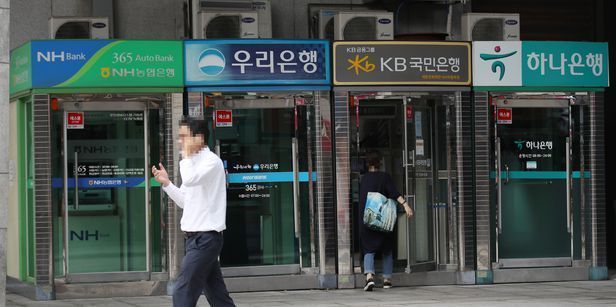
South Korean banks saw their financial health improve in the second quarter from three months earlier as they reported high net profits and raised capital amid the COVID-19 pandemic, data showed Wednesday.
The average capital adequacy ratio of 16 commercial and state-run banks stood at 15.65 percent as of end-June, up 0.29 percentage point from the end of March, according to the data from the Financial Supervisory Service (FSS).
A key barometer of financial soundness, the ratio measures the proportion of a bank's capital to its risk-weighted assets.
The rise came as their risky loans expanded at a slower pace than their total capital, which includes net profits.
The FSS said most lenders had higher capital adequacy ratios than the international standard, despite a steady rise in lending stemming from the coronavirus outbreak.
The Switzerland-based Bank for International Settlements (BIS), an international organization of central banks, advises lenders to maintain a ratio of 8 percent or higher.
At the end of June, KB Kookmin, Hana, Shinhan and other major lenders boasted stable capital adequacy ratios of 15-18 percent.
The figure for two state banks -- the Korea Development Bank and the Export-Import Bank of Korea -- came to 15.89 percent and 16.12 percent, respectively. (Yonhap)
The average capital adequacy ratio of 16 commercial and state-run banks stood at 15.65 percent as of end-June, up 0.29 percentage point from the end of March, according to the data from the Financial Supervisory Service (FSS).
A key barometer of financial soundness, the ratio measures the proportion of a bank's capital to its risk-weighted assets.
The rise came as their risky loans expanded at a slower pace than their total capital, which includes net profits.
The FSS said most lenders had higher capital adequacy ratios than the international standard, despite a steady rise in lending stemming from the coronavirus outbreak.
The Switzerland-based Bank for International Settlements (BIS), an international organization of central banks, advises lenders to maintain a ratio of 8 percent or higher.
At the end of June, KB Kookmin, Hana, Shinhan and other major lenders boasted stable capital adequacy ratios of 15-18 percent.
The figure for two state banks -- the Korea Development Bank and the Export-Import Bank of Korea -- came to 15.89 percent and 16.12 percent, respectively. (Yonhap)








![[Graphic News] More Koreans say they plan long-distance trips this year](http://res.heraldm.com/phpwas/restmb_idxmake.php?idx=644&simg=/content/image/2024/04/17/20240417050828_0.gif&u=)
![[KH Explains] Hyundai's full hybrid edge to pay off amid slow transition to pure EVs](http://res.heraldm.com/phpwas/restmb_idxmake.php?idx=644&simg=/content/image/2024/04/18/20240418050645_0.jpg&u=20240419100350)







![[KH Explains] Hyundai's full hybrid edge to pay off amid slow transition to pure EVs](http://res.heraldm.com/phpwas/restmb_idxmake.php?idx=652&simg=/content/image/2024/04/18/20240418050645_0.jpg&u=20240419100350)

